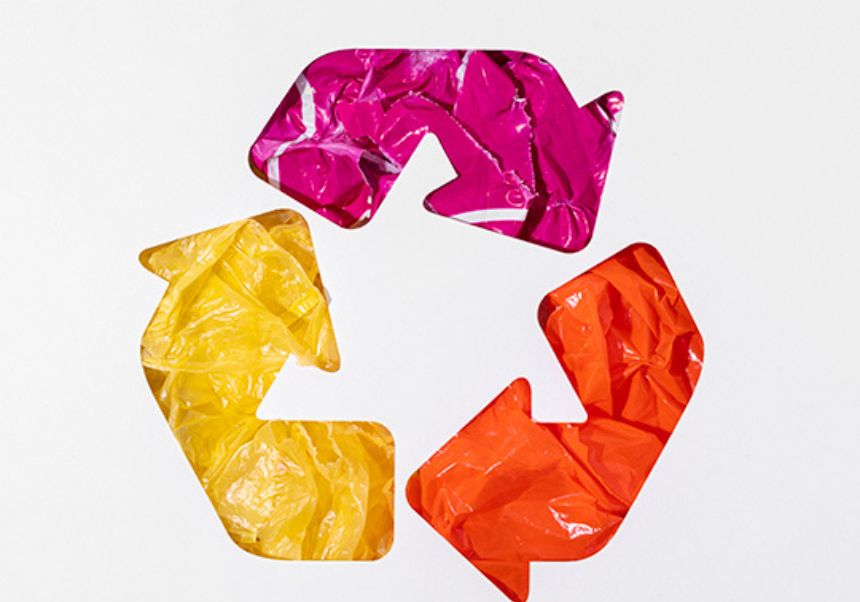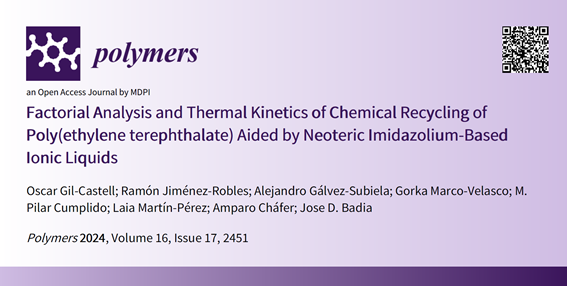
Optimization of Chemical Recycling of PET with Imidazolium-Based Ionic Liquids for Greater Energy Efficiency
In this publication in the journal Polymers, the Materials and Sustainability (MATS) research group at the University of Valencia presents a significant advancement in the chemical recycling of PET through the use of imidazolium-based ionic liquids. The study, titled "Factorial Analysis and Thermal Kinetics of Chemical Recycling of Poly(ethylene terephthalate) Aided by Neoteric Imidazolium-Based Ionic Liquids", was carried out by researchers Óscar Gil-Castell, Ramón Jiménez-Robles, Alejandro Gálvez-Subiela, Gorka Marco-Velasco, M. Pilar Cumplido, Laia Martín-Pére, Amparo Cháfer, and Jose D. Badia.
The work addresses the growing issue of PET waste accumulation by exploring the use of two neoteric ionic liquids, [Emim][OAc] and [Bmim][OAc], as catalytic co-solvents in the glycolysis of PET with ethylene glycol (EG). The results show that both ionic liquids significantly increase the PET depolymerization rate compared to traditional methods, with a more energy-efficient process, notably with [Emim][OAc] exhibiting a lower activation energy (88.69 kJ·mol⁻¹).
Additionally, the study employs factorial analysis to evaluate and optimize key process parameters such as temperature, plastic/ionic liquid mass ratio, and plastic/solvent mass ratio. Optimal conditions were identified for achieving 100% PET conversion, using a temperature of 190 ºC, a P/IL ratio of 1:1, and a P/S ratio of 1:2.5, regardless of the ionic liquid used.
This advancement highlights the potential of ionic liquids in PET chemical recycling, not only to improve process efficiency but also to contribute to a more sustainable management of plastic waste.

Journal: Polymers. Link to publication: https://doi.org/10.3390/polym16172451





